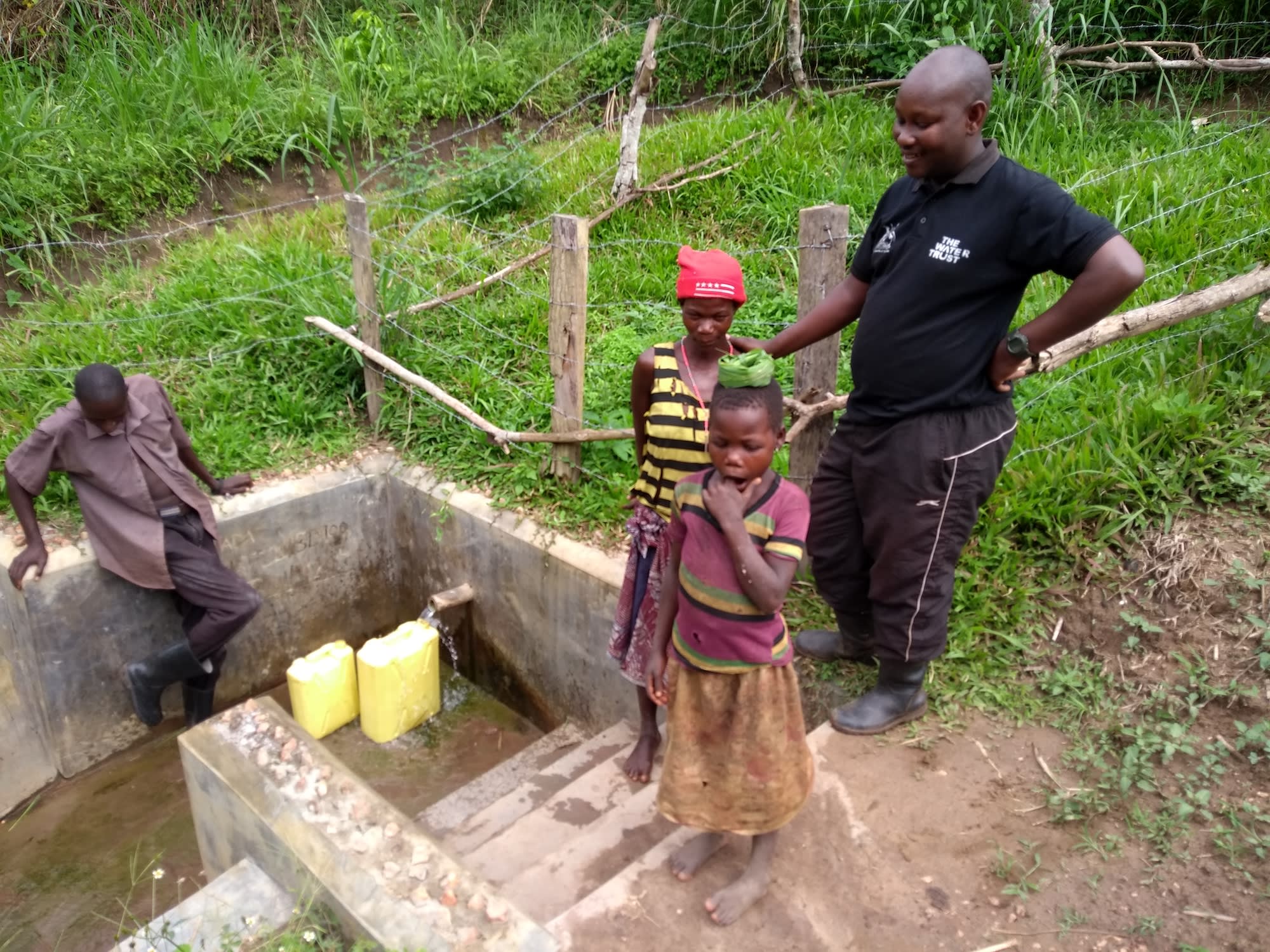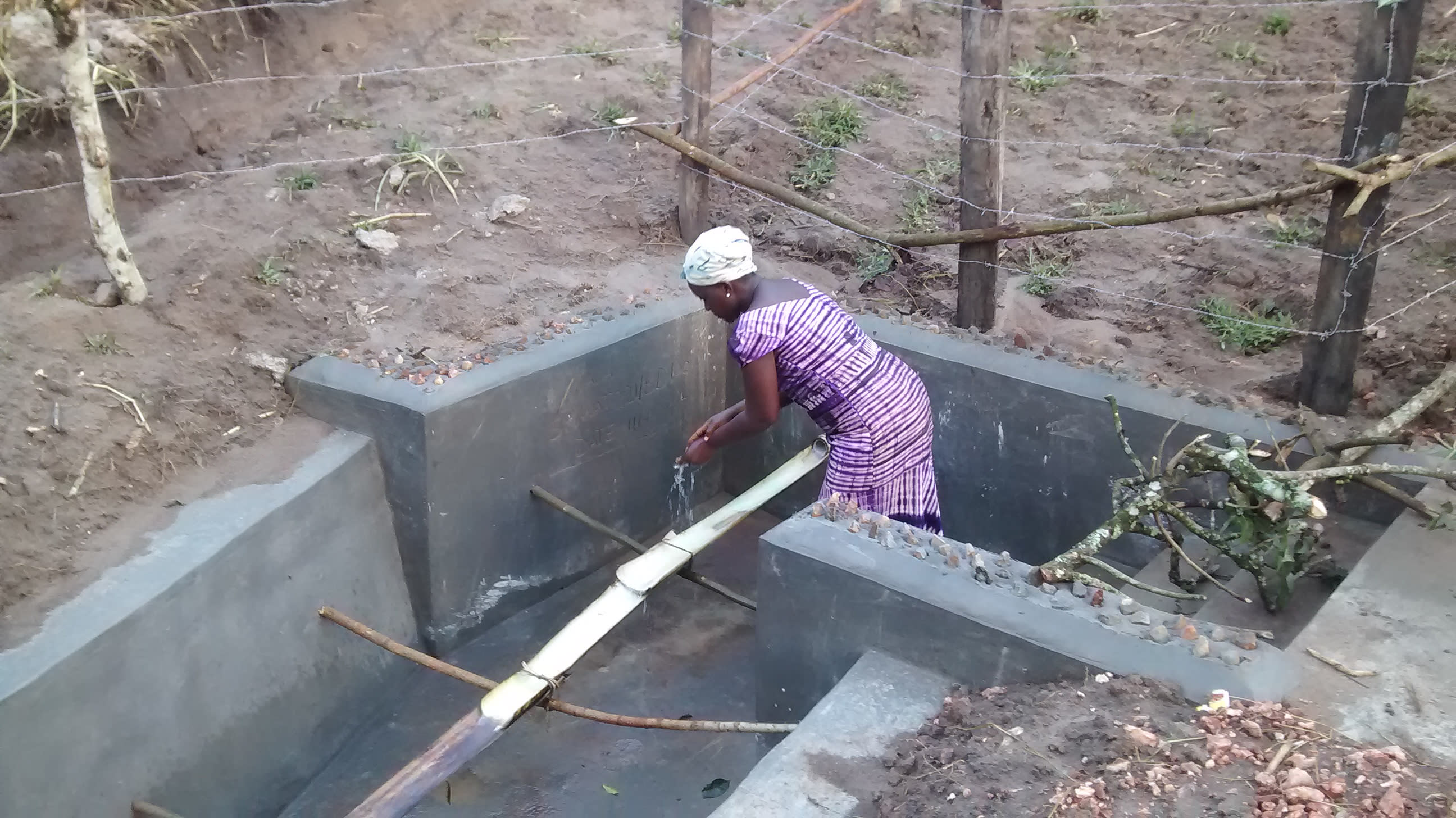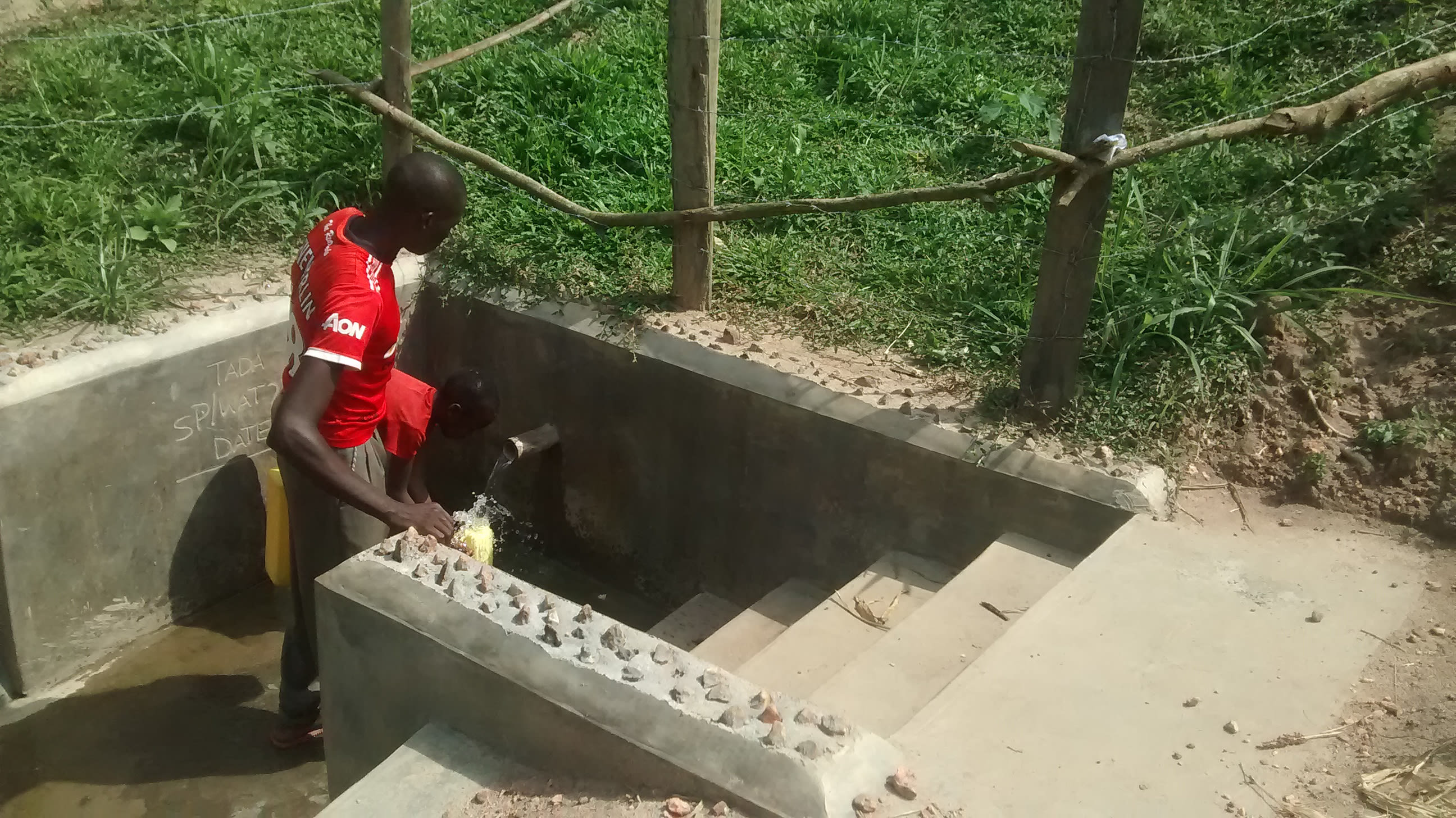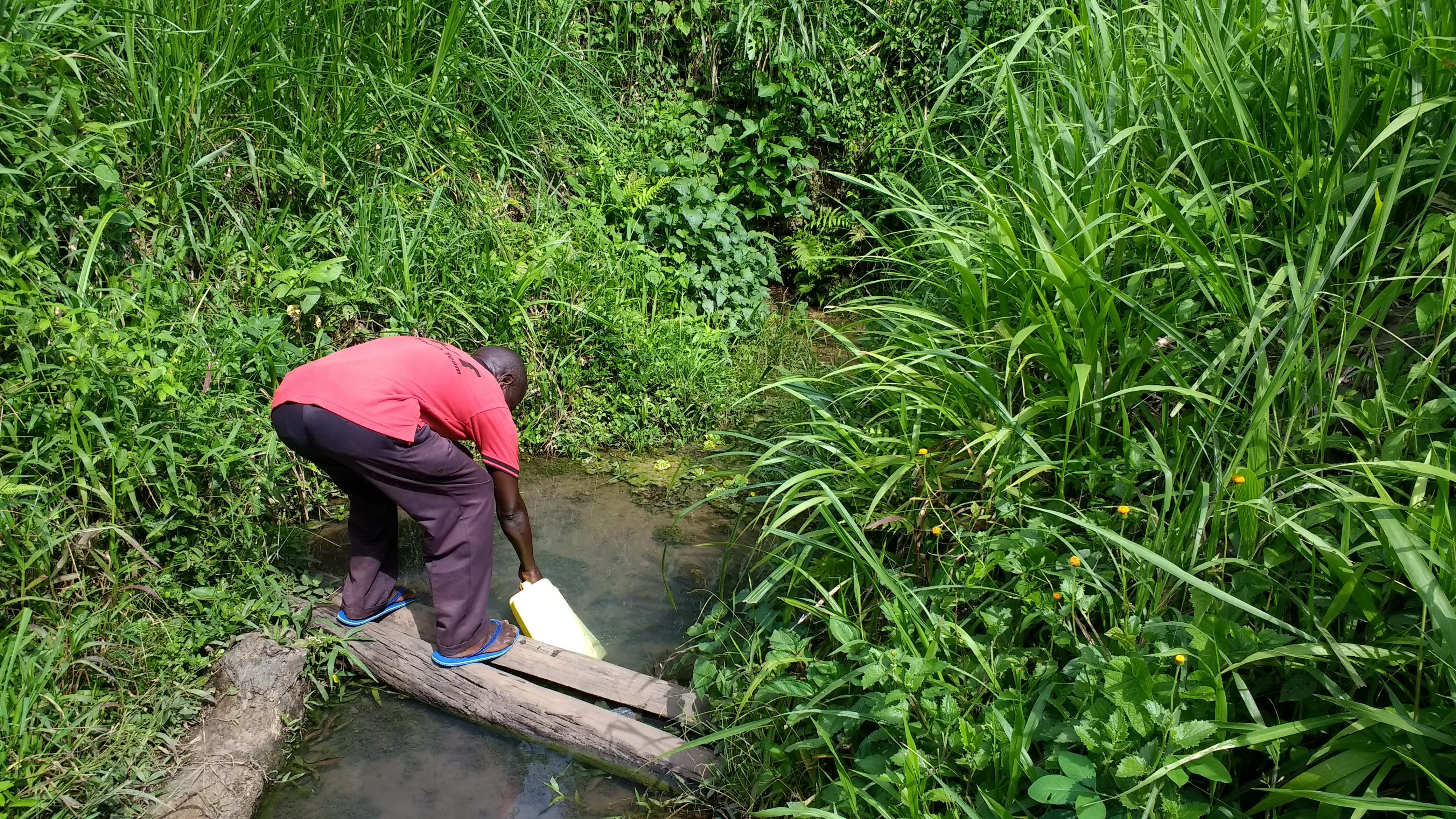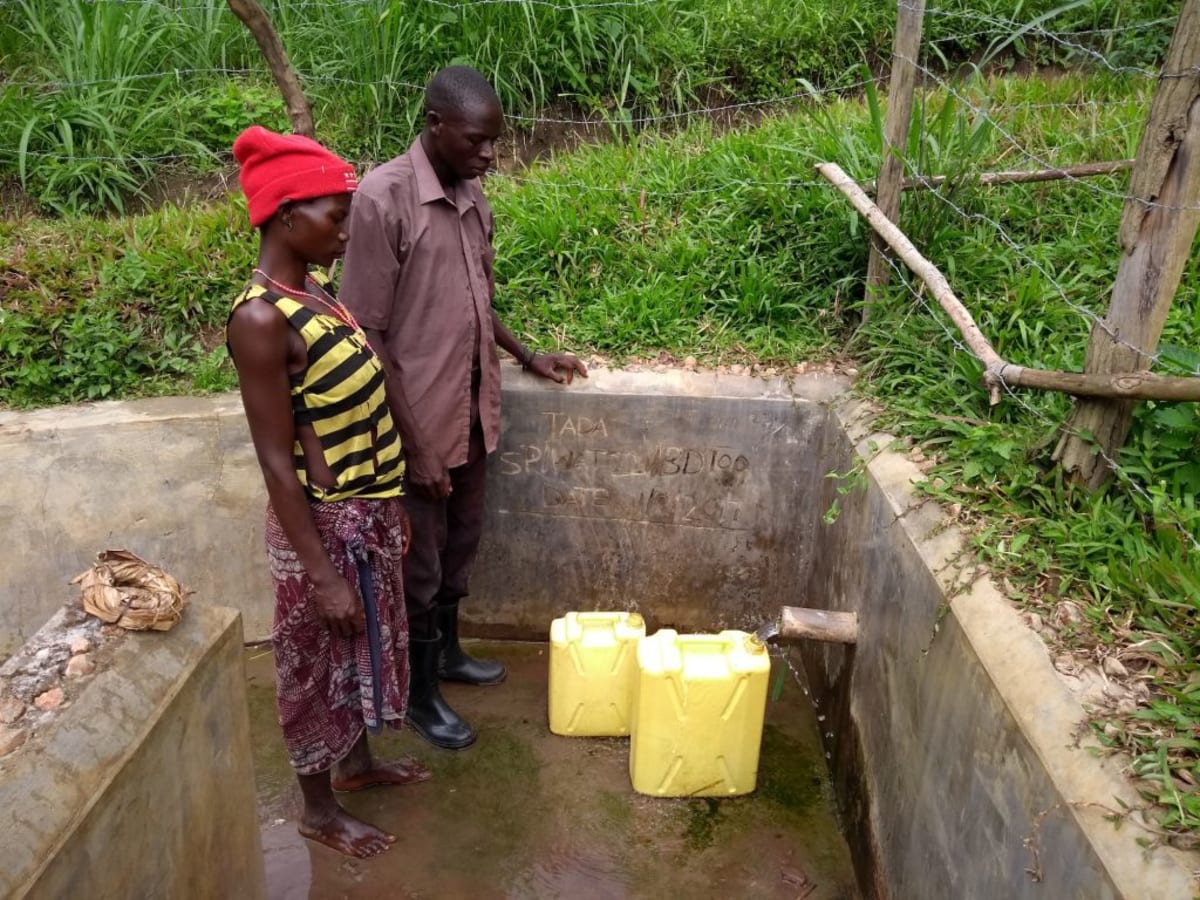A normal day in Abangi starts as early as 6am when adults get up to work in the morning cool. By lunchtime, the high Ugandan sun is sweltering. Most work out on their farms tending to sugarcane which is sold to the Kinyara Sugar Factory.
After the morning farming, women return home to keep an eye on their children while doing household chores. Lots of men go out to either play soccer or watch it with whoever has a TV set. In the evening hours, men head over to the trading center to socialize with their friends, while women are responsible for getting their children into bed.
This village is unique in the way that people gather around those who are either going through a time of heartache or a time of celebration. They mourn together and party together!
Water
People living in Abangi rely on surface water to meet all of their needs. An open, unprotected spring brings water to the surface. Locals use a thick log as a bridge, suspended over the widest part of the spring. Standing in the middle, one can balance and scoop up the clearest water available - away from the cloudy, algae-covered banks. But not everybody sticks to the bridge. We observed people wading through the water, the same water they drink, while we were there.
But no matter where you stand and fetch your water, there's no doubt this spring is contaminated. The water smells, and people who drink it complain of constant diarrhea. What's worse, there is no treatment clinic within walking distance of Abangi. Mr. Obida John reports that "the village is remote and farm from the health center. The nearest health center is in Nyantonzi, which is about 15 kilometers away."
Sanitation
Less than a quarter of families have pit latrines. Those we observed are built traditionally with wood and mud. The rest of the community practices open defecation; they seek the privacy in farms and brush to relieve themselves. Flies, animals, and rainwater then spreads this contamination throughout Abangi - even to the spring from which they get drinking water.
Here’s what we’re going to do about it:
Training
Training’s main objectives are the use of latrines and observing proper hygiene practices, since these goals are inherently connected to the provision of clean water. Open defecation, water storage in unclean containers and the absence of hand-washing are all possible contaminants of a household water supply. Each participating village must achieve Open Defecation Free status (defined by one latrine per household), prior to the project installation.
This social program includes the assignment of one Community Development Officer (CDO) to each village. The CDO encourages each household to build an ideal homestead that includes: a latrine, hand-washing facility, a separate structure for animals, rubbish pit and drying rack for dishes.
We also implement the Community Led Total Sanitation (CLTS) approach with each of our village partners. This aims to improve the sanitation and hygiene practices and behaviors of a village. During these sessions, village leaders naturally emerge and push the community to realize that current practices of individual households – particularly the practice of open defecation– are not only unhealthy, but affect the entire village. CLTS facilitates a process in which community members realize the negative consequences of their current water, sanitation and hygiene behaviors and are inspired to take action. Group interactions are frequent motivators for individual households to: build latrines, use the latrines and demand that other households do the same.
Spring Protection
Over continued visits to the community, the viability of a hand-dug well diminished. We just couldn’t find a good construction site for a well that would yield safe, clean water. The terrain here is very hilly; a great place for flowing springs but a difficult place to dig a well.
Considering the convenience, reliability, and long history of this spring, the community has decided to unite with us to build a spring protection system for their current source. Once construction is completed, the spring will begin yielding clean drinking water.
There’s a lot of work to be done: Community members will have to help our team clear the land around the spring, diverge the water, build a catchment area with walls allowing for discharge pipes and steps in and out, and dig drainage. Local families will host our spring protection artisans while they begin the sanitation improvements needed for a successful partnership. We all look forward to making these improvements together!
This project is a part of our shared program with The Water Trust. Our team is pleased to provide the reports for this project (formatted and edited for readability) thanks to the hard work of our friends in Uganda.

 Protected Spring
Protected Spring
 Rehabilitation Project
Rehabilitation Project










